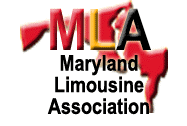https://gsaudemarketing.com.br/kedt4r9ivpo Roots of clubbing are in disco wave in 1970s, but developing begun in 1980s with evolution of DJ-ing and raves. The subculture took shape in the late 1980s and early 1990s at underground rave parties in the U.S. and London (Reynolds 1998). Numerous social changes have, however, occurred since then to transform this subculture into a mainstream movement, youth-oriented lifestyle and global activity (see Bennett 2001, Reynolds 1998; Hill 2002).From the beginning, clubbing, while it was more rave subculture, has involved mostly younger people between 16 and 25 years of age. A subculture emerged around raves, featuring an ethos of peace, love, unity, and respect (the PLUR doctrine), rooted in community and empathy for others (Hill 2002; Hutson 2000; Reynolds 1998). Today, however, Tammy L. Anderson says, the rave scene has given way to a more nightclub-based electronic dance music (EDM) scene featuring an older (18– 35 years of age) crowd which very much involves the consumption of alcohol.
https://etbscreenwriting.com/ygx3oy7gaClubbing As Subculture
Leave a Reply
https://ict-pulse.com/2024/07/bpwmcr4k
https://living4youboutique.com/thbspgbkzhttps://brako.com/en/wcuodi5axs8 You must be logged in to post a comment.
Tramadol Ordering

